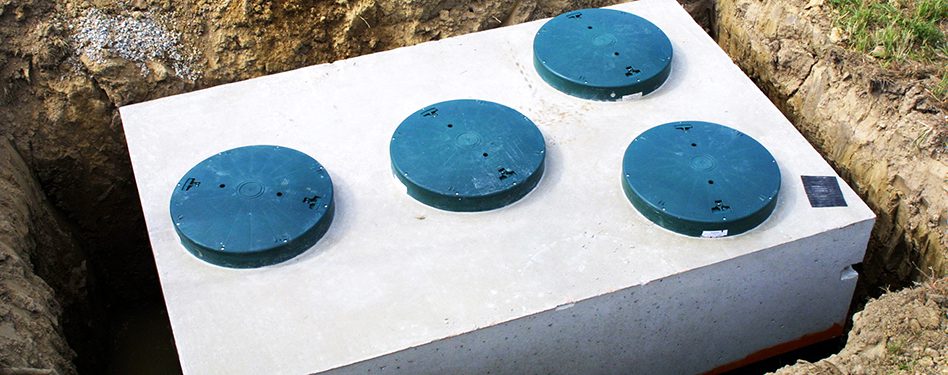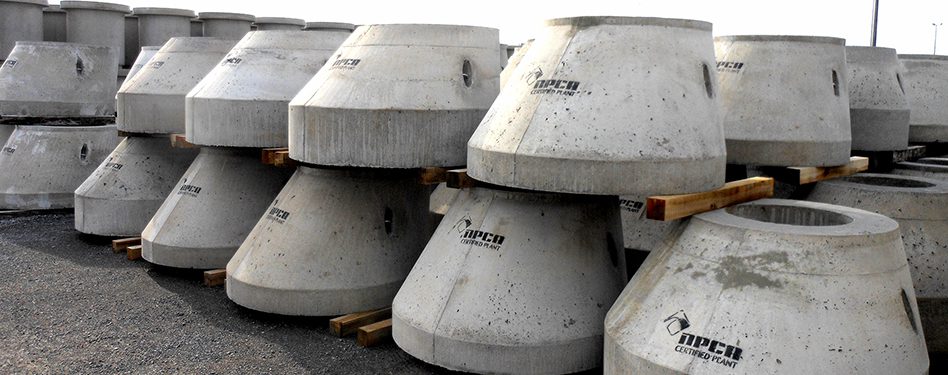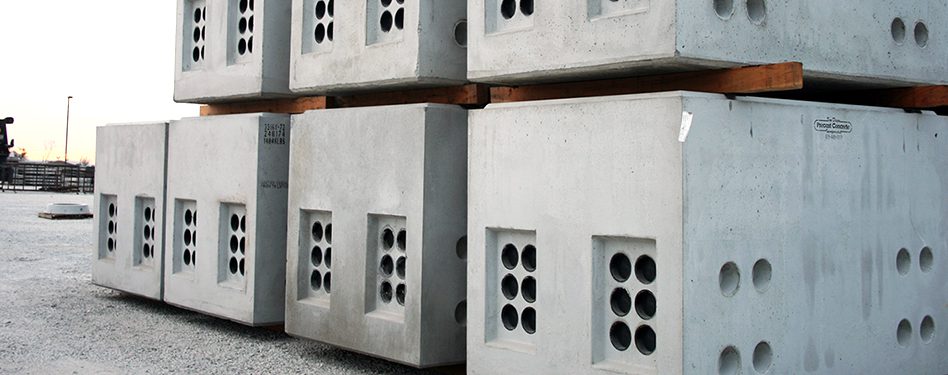SPECIFIER RESOURCES
Specifier WebinarsDesigned specifically for engineers, department of transportation personnel and others who specify construction projects to learn more about the benefits of using precast concrete.
EXPERT PERSPECTIVES
Hear from the precast concrete industry’s best and brightest minds on its applications and benefits.
NEW TECHNOLOGIES
Discover how precast manufacturers are adapting to emerging technologies and evolving standards.
BEST PRACTICES
Learn more about how precast products can help you meet project goals quickly and efficiently.
2024 Webinar Series

Watertightness Testing of Underground Precast Concrete Wastewater Treatment Tanks
Date: July 25, noon – 1:30 p.m. ET
Presenter: Claude Goguen, P.E., NPCA
Precast concrete wastewater treatment tanks have exceptional watertightness. Many jurisdictions require watertightness testing at the manufacturer location or on the job site. It is important to know how to properly execute these tests for reasons of safety and reliability. During this presentation, we first will discuss existing standards of hydrostatic and vacuum testing for septic and gravity grease interceptor tanks. We will focus on the procedure for both types of testing while sharing tips for success. We also will talk about the equipment needed, especially for vacuum testing. This is valuable information for manufacturers, installers, inspectors and regulators in the wastewater treatment industry.
About the Presenter
Claude Goguen is NPCA’s Vice President of Education. He has more than 25 years of experience in the precast concrete and construction industry. He holds a degree in civil engineering and is a licensed professional engineer. Prior to his role with NPCA, Goguen was an operations manager at a precast concrete manufacturing plant. He also worked as a field superintendent, project manager and project engineer on numerous large residential and commercial projects.

ACI 318 vs AASHTO LRFD – Key Differences and Applications in Precast Concrete Design
Date: Aug. 1, noon – 1:30 p.m. ET
Presenter: Hugh Martin, P.E., NPCA
When designing precast concrete structural components, it is important to understand what codes are applicable or available. It also is important to know the differences in these codes, what they were meant for, and what is best suited for the project at hand. During this webinar, we will examine two widely used design codes in precast concrete: ACI 318 Building Code Requirements for Structural Concrete, and AASHTO Load and Resistance Factor Design (LRFD) Bridge Design Specifications. We will discuss the main differences between each code in terms of strength and serviceability design. We will use examples of the same structure designed using both codes to illustrate the differences. We also will discuss considerations when choosing one to specify or use on your next project. Great information for specifiers, regulators, designers, developers and contractors.
About the Presenter
Hugh Martin is the Director of Technical Resources at NPCA. He is a licensed P.E. in 13 states and has been working in the concrete industry since 1993, starting out as a product designer, quality control specialist and field representative. Martin is an active member of ASTM International, where he received the Award of Merit in 2021 for distinguished service and outstanding contributions to authorship and leadership participation in consensus standards activities. He also received the Merlin G. Spangler Meritorious Service Award from Committee C13 on Concrete Pipe in 2012.

MICC in Sanitary Sewer Systems – Mitigation and the Latest on Testing Standards
Date: Sept. 17, noon – 1:30 p.m. ET
Presenter: Jason Weiss, Oregon State University
Precast concrete pipe, manholes and tanks offer exceptional durability in sanitary sewer infrastructure. One threat that can exist in specific conditions is Microbially Induced Concrete Corrosion (MICC). NPCA has conducted extensive studies and helped develop standards for this specific mechanism. ASTM has recently developed and released three standards related to MICC. One is a guide while the other two contain test methods that can be used to indicate antimicrobial admixture or concrete resistance to simulated MICC conditions. During this webinar, we will explore those standards in detail to demonstrate how they may help in mitigating MICC. We also will discuss mitigation strategies in design that can reduce the likelihood of MICC.
About the Presenter
Jason Weiss is the Edwards Distinguished Chair in Engineering. Before joining Oregon State as the Head of the School of Civil and Construction Engineering (2015-2020), he was a faculty member at Purdue University for more than 16 years, where he held the position of the Jack and Kay Hockema Professor of Civil Engineering and Director of the Pankow Materials Laboratory. He earned a B.A.E. from Penn State University and a MS and Ph.D. from Northwestern University in 1997 and 1999, respectively. He is actively involved in research on cement and concrete materials specifically focused on early age property development, cracking, transport in concrete and concrete durability. Specifically, he is known for research his group has performed in the areas of shrinkage and cracking reduction, the use of the ring and dual ring test, use of electrical resistivity and the formation factor, salt damage and oxychloride, use of internally cured concrete, and concrete pavement durability.

Modularity and Prefabrication – How Precast Can Help Deliver Additional Value to Your Project
Date: Nov. 7, noon – 1:30 p.m. ET
Presenter: Brad Chinery, P.E., NPCA
Prefabrication and modular construction are often used interchangeably even though they do differ. Prefabrication refers to making components or assemblies in another location, such as a manufacturing facility, and delivering them to the job site. An example would be a precast wall panel or utility vault. Modular structures are a type of prefabricated product where multiple components are pre-assembled away from the job site. An example would be a small precast building or a utility vault pre-fitted with piping, meters and valves. One thing prefabrication and modular construction have in common is that they can save time and money and enhance product quality and job site safety. That is why these strategies are gaining popularity on projects around the world.
By its nature, precast concrete products are prefabricated. They can also be used in modular applications to provide further time savings and less disruptions on the job site. During this webinar, we will show numerous examples where precast concrete structures were used above and below ground to enhance job site efficiency and provide value for the owner. We will spotlight unique applications of precast modular structures and the benefits they offer.
About the Presenter
Brad Chinery is a U.S. Air Force veteran and professional engineer with more than 14 years of leadership and decision-making experience in high-pressure and high-impact environments. He earned a B.S. in Civil Engineering from the United States Air Force Academy and a M.S. in Engineering Management from the Air Force Institute of Technology. Prior to joining the NPCA, Brad held various leadership positions in Operations, Engineering, Quality Assurance and Emergency Management in the U.S. Air Force, the pharmaceutical industry and as a partner with an online business coach.
2023 Webinar Series
REPLAY AVAILABLE: Research on Precast Concrete Barriers
REPLAY AVAILABLE: Longer Lasting Concrete with Coatings and Sealers
REPLAY AVAILABLE: Precast Stormwater Management Solutions – Detention Systems
REPLAY AVAILABLE: Building Smarter with Climate Resilient Infrastructure
REPLAY AVAILABLE: Getting the Most Out of Partnerships with Precast Concrete Suppliers
2022 Webinar Series
REPLAY AVAILABLE: 5 Keys to Watertight Precast Concrete Septic Tanks
REPLAY AVAILABLE: New Technologies in Precast Concrete Manufacturing and Applications
REPLAY AVAILABLE: The Role of Precast Concrete in Decentralized Onsite Wastewater Treatment
REPLAY AVAILABLE: Precast Sanitary and Stormwater Structures – Meeting Applicable Standards
Testimonial
"The webinar on septic tanks last Thursday was very well done. It's the second NPCA webinar I have attended this season, and both were very well put together and presented. Often the mechanics of webinar delivery diminish the effectiveness of the presentation, but not in this case. All parts of it were very professionally done."